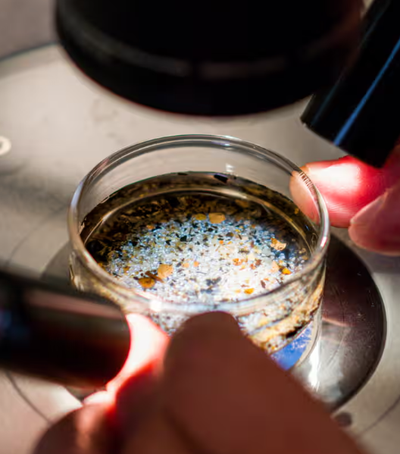
A potentially historic discovery has been made by a team of scientists from the University of Cambridge, who have identified possible traces of life in the atmosphere of exoplanet K2-18b, a planet located about 124 light-years from Earth, in the constellation Leo.
This planet has long been an object of interest to astronomers because of its unique characteristics: it is located in the so-called habitable zone around its star, where temperatures could allow the existence of water in a liquid state. But what makes this latest discovery extremely interesting is the presence of two specific substances in its atmosphere – dimethyl sulfide (DMS) and dimethyl disulfide (DMDS).
What are DMS and DMDS?
DMS (Dimethyl Sulfide) and DMDS (Dimethyl Disulfide) are sulfur-based compounds that on Earth are produced exclusively by living organisms, mainly marine microorganisms. Until now, there has been no evidence that these molecules can be created abiotically, that is, without the intervention of life. Therefore, their discovery in an atmosphere outside our solar system raises reasonable doubts about the existence of a microbial life form.
How was the discovery made?
The team used advanced spectroscopic data collected by the James Webb Space Telescope, which is able to analyze the light that passes through the atmospheres of exoplanets as they pass in front of their stars. The specific spectral signatures of DMS and DMDS were identified in this data, adding further weight to the hypothesis that K2-18b could be habitable.
A strange but habitable world
K2-18b is a “Hycean” planet – a proposed new class of planets that contain deep oceans beneath a hydrogen atmosphere. These conditions could theoretically be favorable for microbial life, especially if liquid water exists on or below the surface. Although it is larger than Earth (about 8.6 times more massive), its climatic and atmospheric conditions do not preclude the development of microbes or simple life forms.
What does this mean for the search for extraterrestrial life?
This discovery represents a major step forward in the search for life in the universe, confirming that modern telescopes can detect atmospheric compositions directly associated with life. While not definitive proof, the presence of DMS and DMDS is perhaps the most promising indicator we have yet of extraterrestrial life.
Scientists are cautious in their conclusions, but optimistic. If more data in the future confirms the biological origin of these substances, then humanity may be on the verge of one of the most important discoveries in history: we are not alone in the universe.
The exoplanet K2-18b reminds us that somewhere, in a distant corner of the cosmos, life may flourish – different from what we know, but alive nonetheless.
Source: https://www.techexplorist.com/





